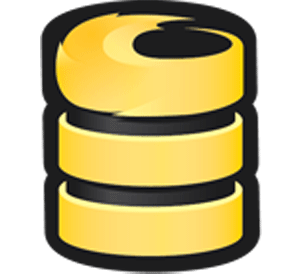 NEWS
NEWS
 NEWS
NEWS
 NEWS
NEWS
![]() For Andrew Lee and James Tamplin, founder of the small start-up Firebase, development environments have changed in recent years to adapt to the web model. They now require speed and reliability but also need to be available 24/7. In other words, where mobile and cloud applications are generally based on a database and a mediation layer, Firebase proposes to replace the concept with Backend-as-a-Service model.
For Andrew Lee and James Tamplin, founder of the small start-up Firebase, development environments have changed in recent years to adapt to the web model. They now require speed and reliability but also need to be available 24/7. In other words, where mobile and cloud applications are generally based on a database and a mediation layer, Firebase proposes to replace the concept with Backend-as-a-Service model.
By leveraging the cloud, Firebase provides a back-end infrastructure that helps build web applications in real time, aimed to mobile devices such as smartphones and tablets, online collaboration tools, multiplayer games, messaging and other types of apps.
Cloud Service Without Cloud
Applications incorporate more native code on the terminal server while traditionally with web applications, the code was largely written on the server. With Firebase, all the code is executed on the client and server-side only executes data. The challenge of this model is particularly in need of a persistent connection between the client and the server in real time.
Firebase removes this bottleneck with a new approach based on data synchronization. Rather than using a traditional request and response model, it works by synchronizing data between devices. Whenever your data changes, all clients are immediately notified within milliseconds. The synchronized data is also persisted, allowing new clients to be immediately updated.
In other words, the client communicates directly to the database located in the cloud, and since all the code is on the client, there is no need for any server code. Developers can specify which data are already available on the client, Firebase then sends only the required updates.
With a little JavaScript code, Firebase can be integrated into your own website. Developers can write simple call messages to distribute the information to all users who open the website. Firebase stores the data in JSON format and gives each message a unique URL. This allows developers to specify which data is to be synchronized with Firebase, and then recall them at REST.
A REST API can also be connected to Firebase to provide its own server services. It promises Firebase to scale from one user to millions of users. Users can also exchange data, if the application provides that feature.
Tamplin claims that Firebase is a step ahead of Heroku and is the first of its kind to offer a real-time solution. Firebase works in all major browsers like Firefox, Chrome, Safari, Opera and Internet Explorer.
Firebase Goes Public
Not surprisingly, despite the first product has been officially announced in April 2012, Firebase solutions are already used by many customers in the U.S., including the CBS television, Atlassian, LiveMinutes, Twitch.TV, Nitrous.IO and others to develop mobile and web applications. The company saw 4,000 developer sign-ups in the first week and raised a $1.1 million round shortly afterwards.
The company has finally launched to the public with a new pricing structure. It will offer 100MB of storage and 5GB of bandwidth per month free of charge to developers. The paid plans ranges from $50 to $1,500 per month, depending on usage and number of developers use the system. Firebase will also make its money by charging developers $4 a GB for storage, and $2 for cloud storage.
“We’re finally mature and ready for primetime,” said cofounder James Tamplin. “Since Firebase’s public beta in February, we’ve had some great startups bet the farm on Firebase. We’ve also got enterprise companies like Disney and CBS. … We’ve done a lot of work behind the scenes. With infrastructure, the developer only sees the tip of the iceberg, and there’s a lot more under the water.”
To date, over 22,000 Firebase developers have implemented more than 6000 apps. Every day there are about 20 million client sessions on the company’s servers. Tamplin said the end goal of the product is to help developers build amazing experiences they wouldn’t have otherwise be able to build — and even bring novices that just started programming into the fold.
He added there are more new exciting features including advanced querying, expanded platform support, offline disk persistence, and improved debugging and analytics tools are coming to this platform in near future.
Support our mission to keep content open and free by engaging with theCUBE community. Join theCUBE’s Alumni Trust Network, where technology leaders connect, share intelligence and create opportunities.
Founded by tech visionaries John Furrier and Dave Vellante, SiliconANGLE Media has built a dynamic ecosystem of industry-leading digital media brands that reach 15+ million elite tech professionals. Our new proprietary theCUBE AI Video Cloud is breaking ground in audience interaction, leveraging theCUBEai.com neural network to help technology companies make data-driven decisions and stay at the forefront of industry conversations.